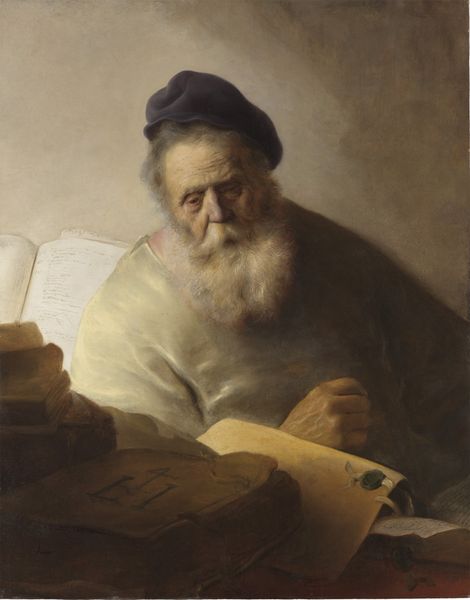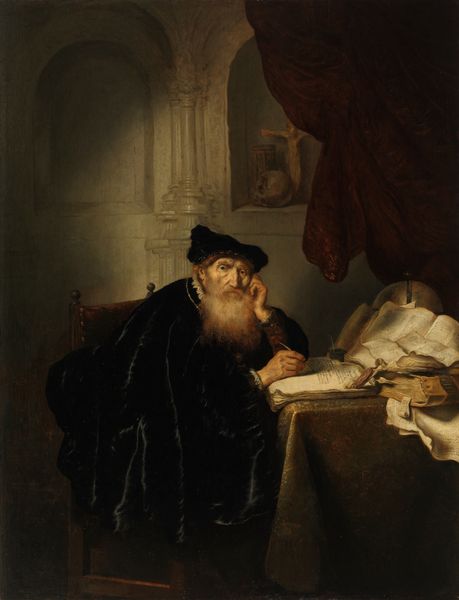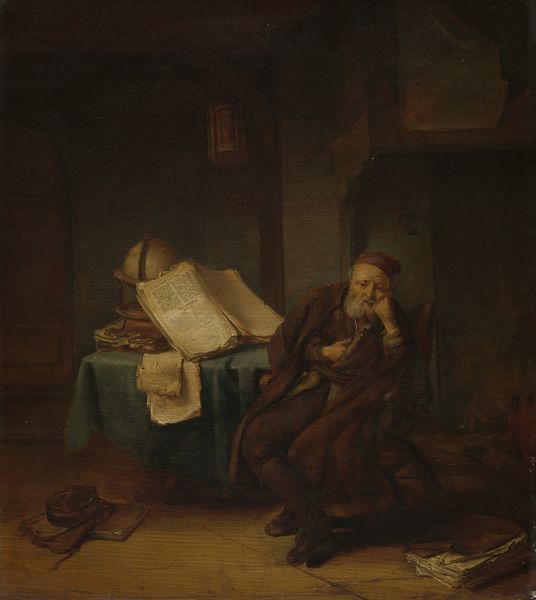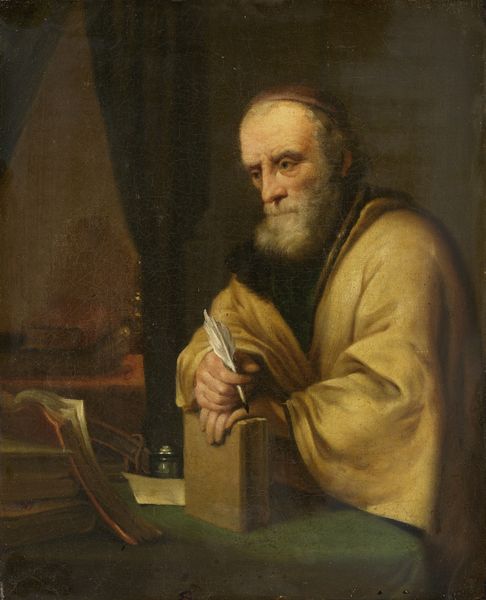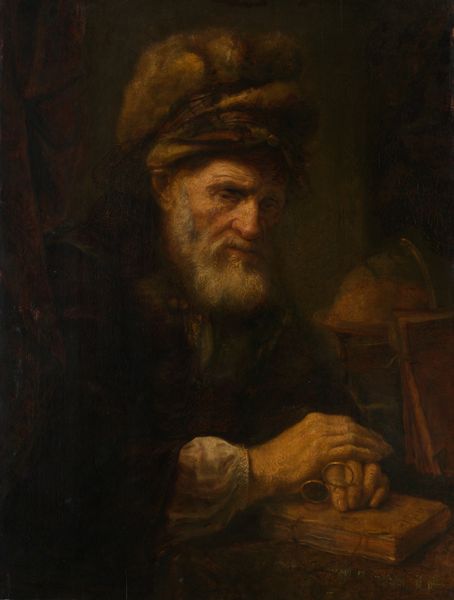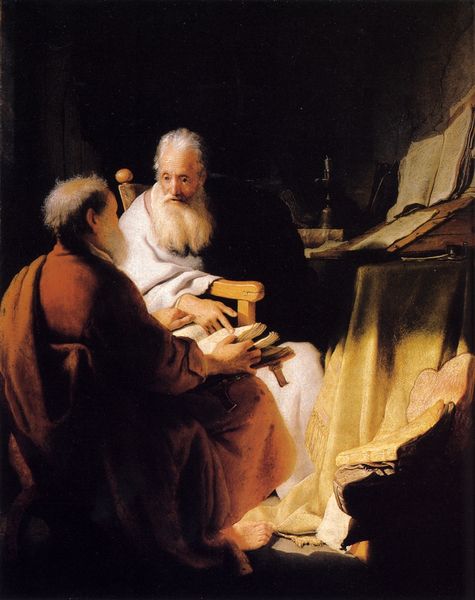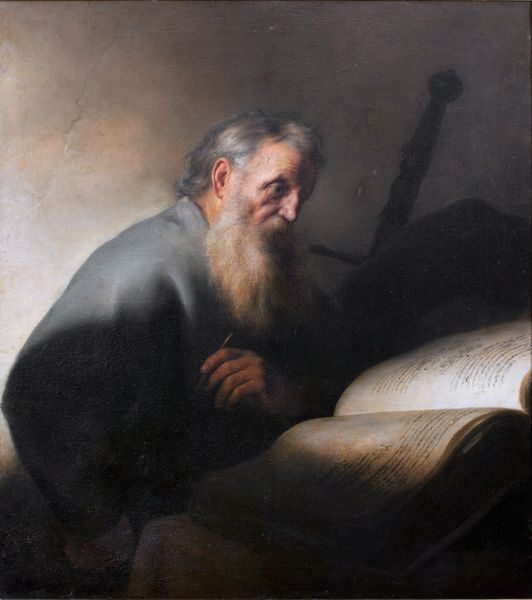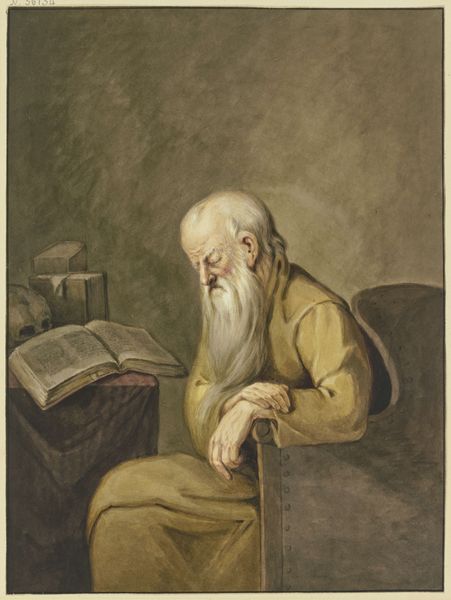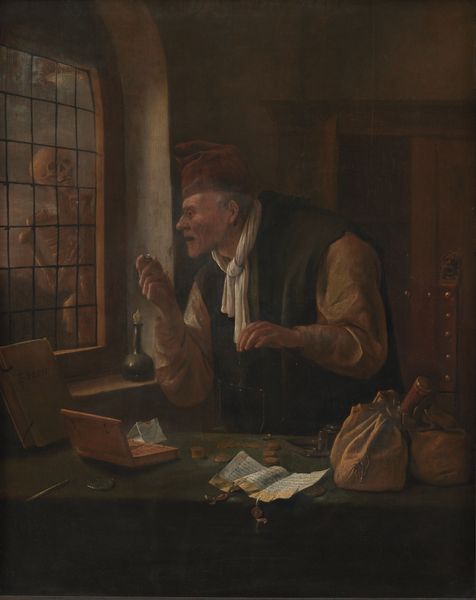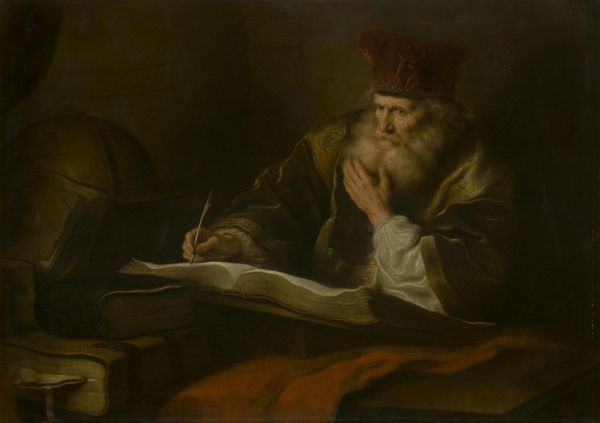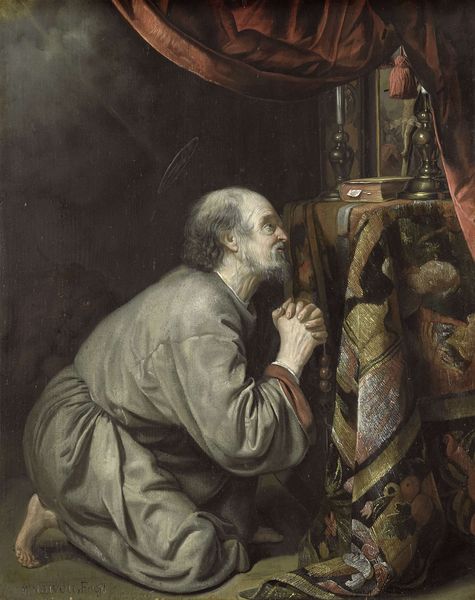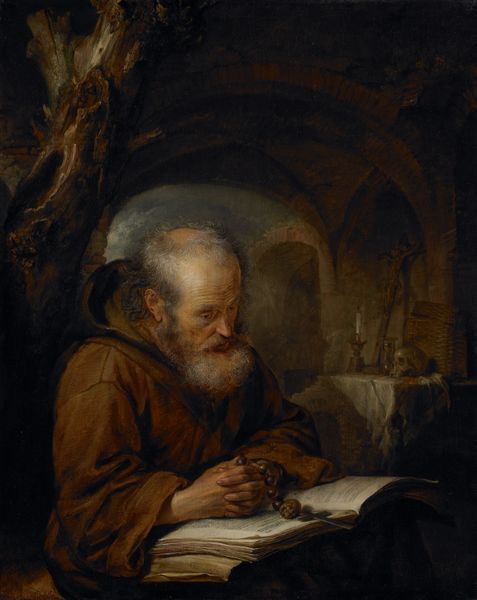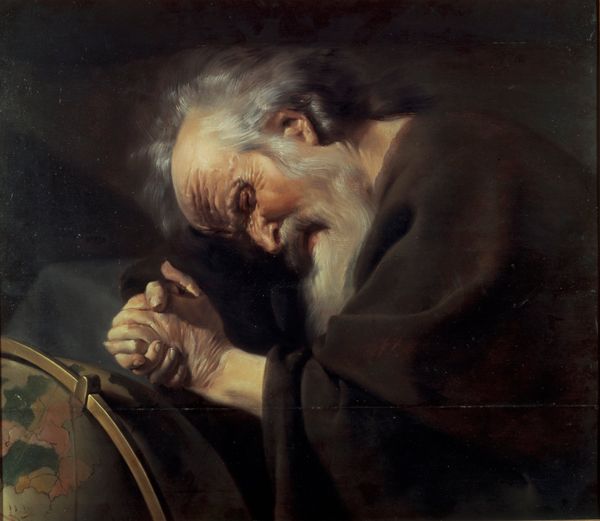
painting, oil-paint, wood
#
portrait
#
baroque
#
dutch-golden-age
#
painting
#
oil-paint
#
wood
#
genre-painting
#
portrait art
Dimensions: 67.5 cm (height) x 51 cm (width) (Netto)
Curator: Salomon Koninck’s “An Old Man Counting His Money,” painted around 1635 and housed here, presents an intimate study rendered in oil on wood. My immediate impression is one of melancholic contemplation, conveyed by the somber palette and the subject’s downcast gaze. Editor: Indeed. Note the structural contrasts Koninck orchestrates here. The stark verticality of the architectural features—that imposing arch and weighty curtain—serve as a striking counterpoint to the stooped, almost collapsed posture of the figure himself. It's a potent juxtaposition. Curator: Considering its time, paintings depicting similar subjects were popular as genre paintings during the Dutch Golden Age, often seen as moralistic warnings against greed and earthly possessions. Editor: And we see how Koninck cleverly engages with the visual language of his era, albeit with a critical eye. The textures are rich, undeniably. Look at the folds in the red table covering and the details in his robe—it draws attention to its materiality and thus to our perceptions of how such paintings shape social ideas. Curator: True. And what about the dramatic lighting? Notice how the light illuminates his weathered face and gnarled hands, directing our focus. His expression becomes a focal point in the overall composition, seemingly worn down by his laborious accounting, hinting at the transient nature of worldly wealth. Editor: Precisely. The staging feels pointedly theatrical, almost as if to suggest these supposedly timeless economic lessons and the role of paintings that teach them are a dramatic social artifice themselves, reflecting perhaps how patrons, museums and artists of the time played their part in supporting and benefitting from such social structures. Curator: It’s an intriguing reading. But stepping back, perhaps the emotional pull originates from Koninck’s skillful modulation of light and shadow, using this contrast to evoke empathy for a man grappling with his mortality, as seen through the lens of material reckoning. Editor: Maybe, but as much as this painting tells us about an old man and his money, it offers a clear insight into 17th-century Dutch social and economic thought and of course into art’s central role in capturing the concerns of the era. Curator: Well, whether seen through formal qualities or within socio-political paradigms, the emotional force that flows out from "An Old Man Counting His Money” leaves an indelible mark.
Comments
No comments
Be the first to comment and join the conversation on the ultimate creative platform.
